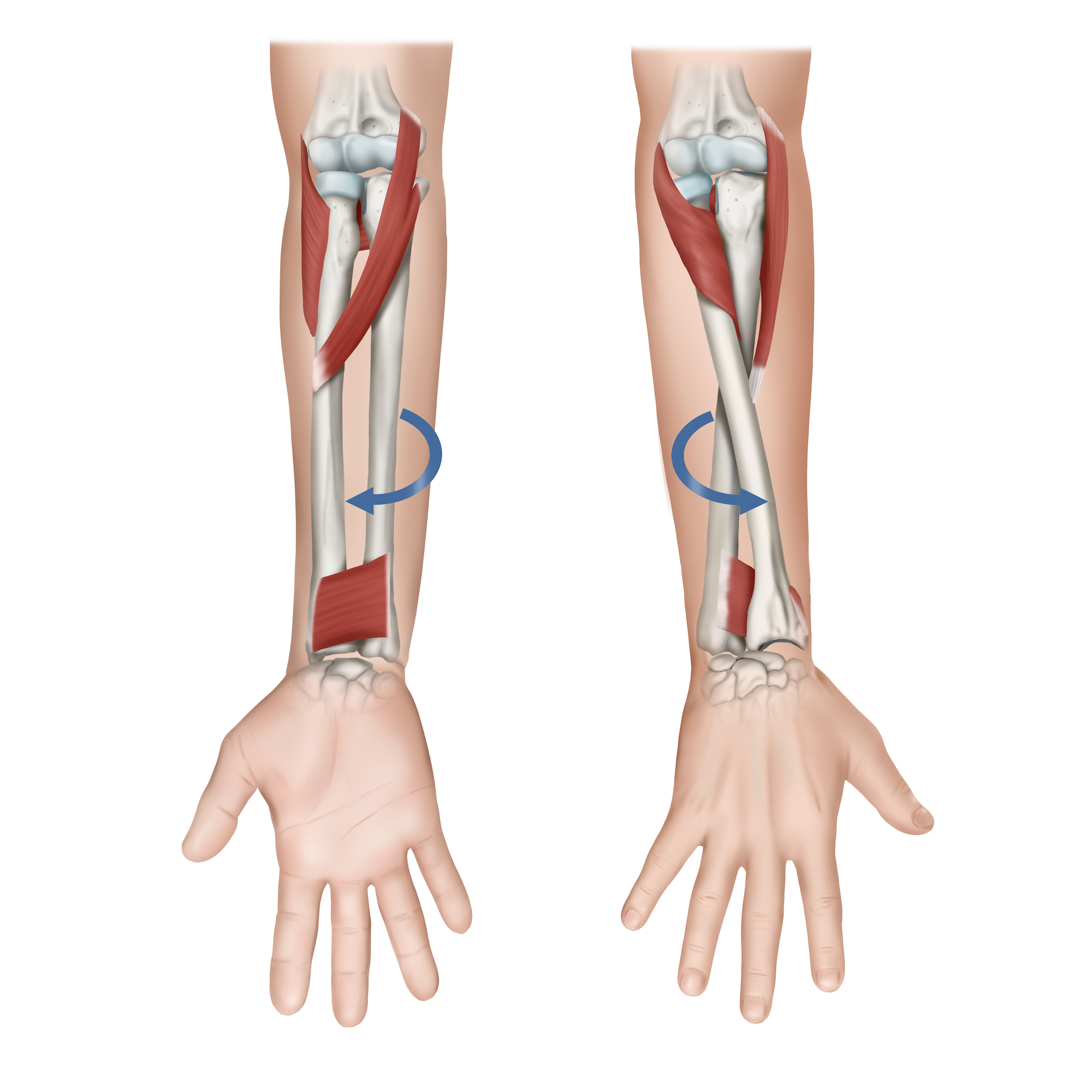What Is the TFCC?
TFCC is the abbreviation for the Triangular Fibrocartilage Complex, which is a load bearing structure that stabilizes and supports the joints of the forearm: the radius and the ulna. The TFCC also helps to connect and stabilize the bones of the forearm with the small bones of the hand on the “pinky side” of the wrist.
What Is a TFCC Tear?
TFCC injuries or tears typically occur when a load is compressed on the TFCC with the wrist in ulnar deviation (ie. with the wrist bent towards the pinky). They can also occur with activities that are associated with forced ulnar deviation, such as swinging a golf club or swinging a bat.

Additionally, acute TFCC tears can occur concurrently with other injuries such as wrist fractures or distal radius fractures. Chronic TFCC injuries can result from positive ulnar variance (where the ulna is longer than the radius). Which can be a result of trauma or the patient’s native anatomy.
Because of the differing and complex components of the TFCC, a tear in certain regions of the TFCC can cause or at least be associated with wrist instability, wrist dysfunction, and pain.
What Does a TFCC Tear Feel Like?
TFCC tears generally present in the form of ulnar-sided wrist pain, which typically worsens with activity. The ulna is the bone that is on the pinky side of the wrist, and the pain that patients usually feel is located between the end of that bone and the beginning of the next one.
TFCC related pain is typically associated with loading or rotating activities such as opening a door, turning a key, swinging a golf club, or other activities that involve those pronation/supination motions.
Additionally, a TFCC tear may present with weakened grip, stiffness or clicking and popping at the wrist.
How Do You Test for a TFCC Tear? (TFCC Tear Test)
A TFCC tear is diagnosed based on patient history and clinical exam testing for point tenderness, provoked pain with certain maneuvers, and reproducible instability. Initial imaging is in the form of X-rays to assess for fracture and evaluate ulnar variance (positive ulnar variance can be associated with a central TFCC tear). However, the most reliable mode of advanced imaging to assess for TFCC tears is MRI.
MRI imaging displays soft tissue injuries, and with reference to TFCC injuries could demonstrate either a peripheral tear of the TFCC, which can be repaired or a central tear of the TFCC, which cannot be repaired but can be surgically debrided (remove damaged tissue), if needed.
If left untreated, can a TFCC Tear get worse?
There are two general types of TFCC Tears: Peripheral tears–which are in the vascularized area of the TFCC (i.e., the area containing blood vessels), and central tears—which are in the non-vascularized area of the TFCC.
If a central tear occurs, the pain may get worse if left untreated.
If a peripheral tear occurs, instability of the distal radial ulnar joint (DRUJ) along with increased pain may occur. Furthermore, instability of the DRUJ may lead to arthritis at the DRUJ, weakness, and limitations in function. Postponing early treatment for a peripheral tear, which can be in the form of proper immobilization alone, could potentially result in chronic injuries that would require more involved surgical reconstruction and could permanently compromise function.
What Are the Treatment Options for a TFCC Tear?
Each case of a TFCC tear would be analyzed to determine the type and severity of the injury. Depending on the individual diagnoses, treatment options may include:
- Splinting/Casting (only possible in certain cases of peripheral TFCC tears)
- Therapy
- Cortisone Injections
- Arthroscopic Surgery (minimally invasive)
- Debridement (removal of damaged tissue)
- Reconstructive Surgery
Learn more about treatment options for a TFFC tear at the American Society for Surgery of the Hand.
How long does a TFCC Tear take to heal after surgery?
Post-surgical healing can take anywhere from two to six weeks and typically involves the patient being in a cast. Exact healing times differ from patient to patient and depends greatly on the patient’s diagnoses and the particular type of surgery performed.
Can a TFCC Tear Heal on Its Own?
In some cases, peripheral TFCC tears without instability may heal on their own, particularly if they are in a well-vascularized area. Treatment would require a period of immobilization. Typically, a patient would be put into a cast or a removable splint, and advised not to perform any activities that aggravate the TFCC tear and cause pain. Immobilization allows the TFCC tear proper time to heal naturally.

